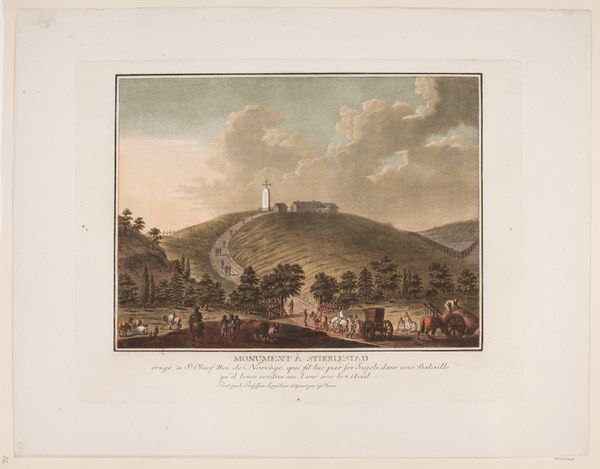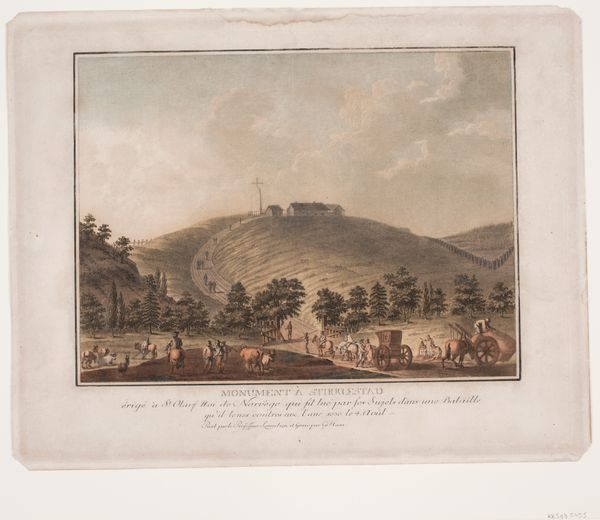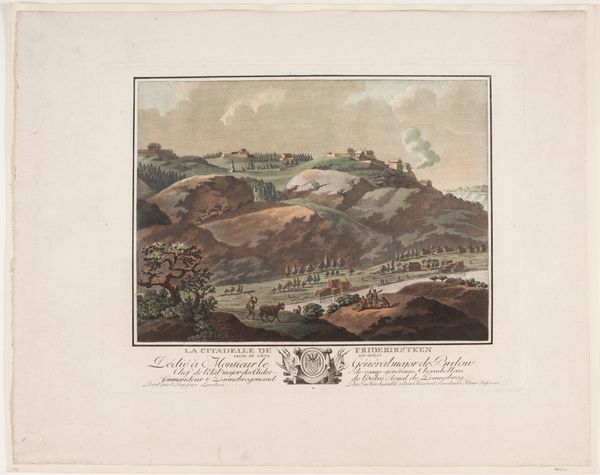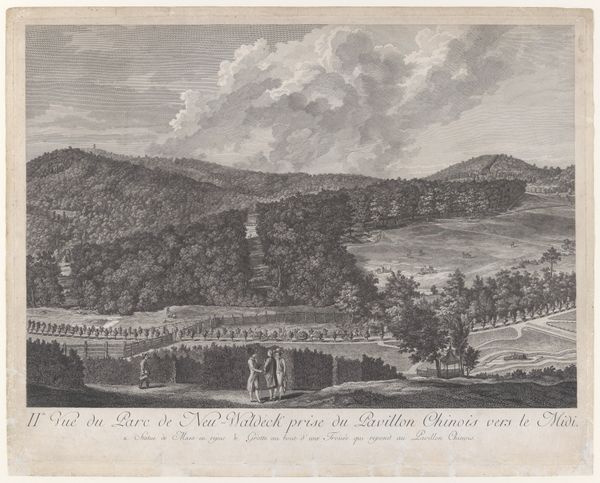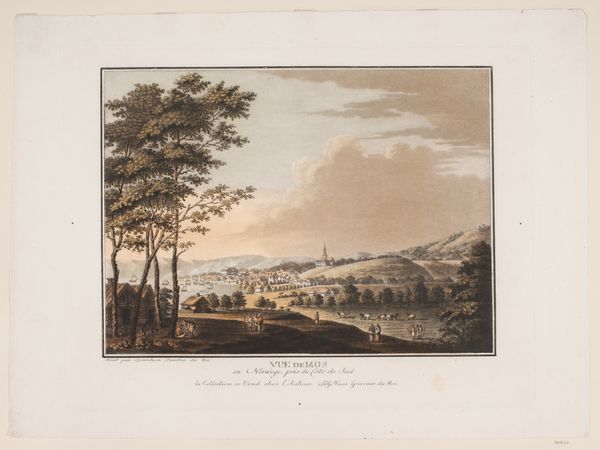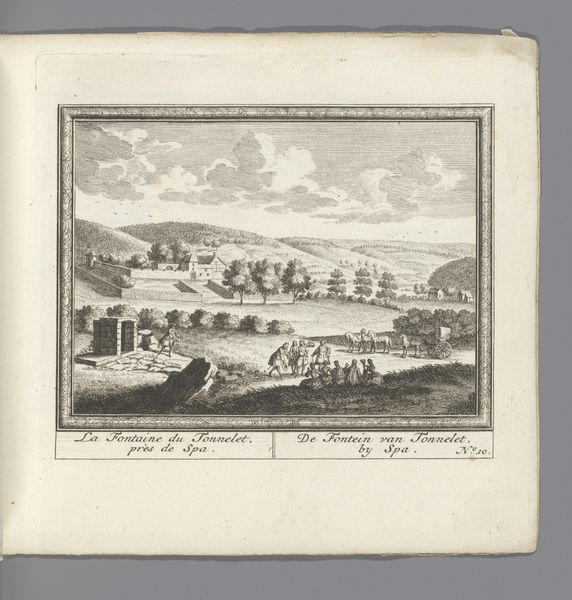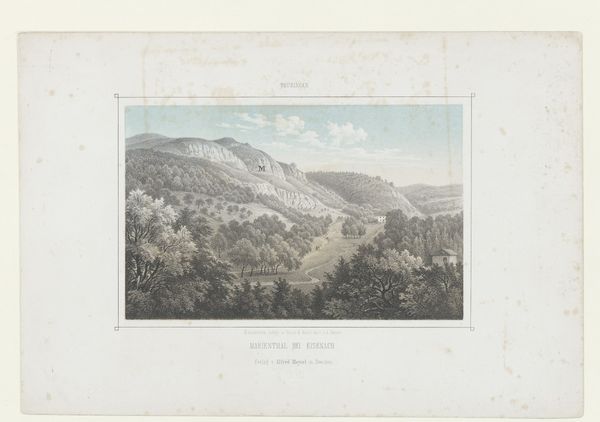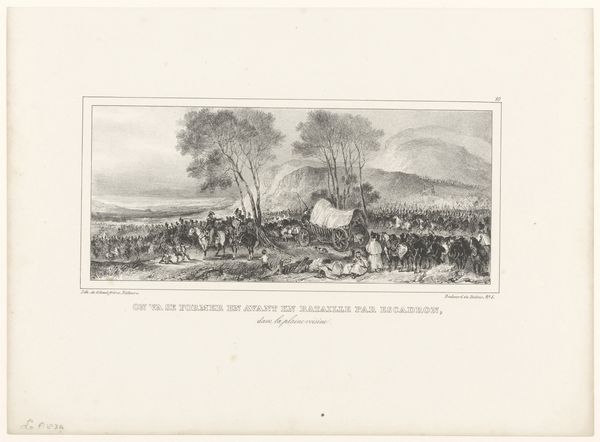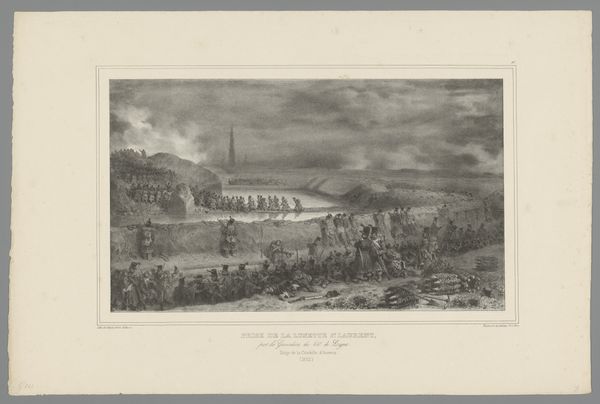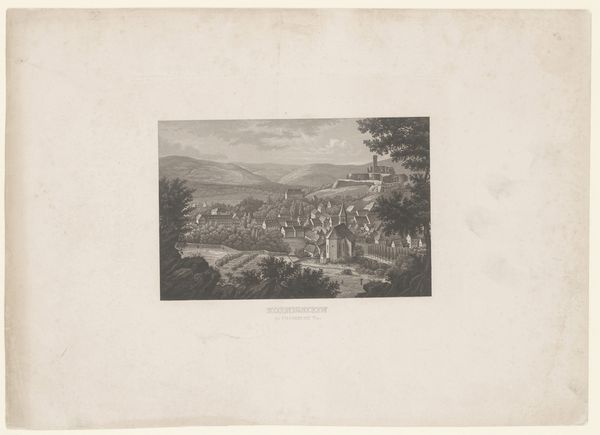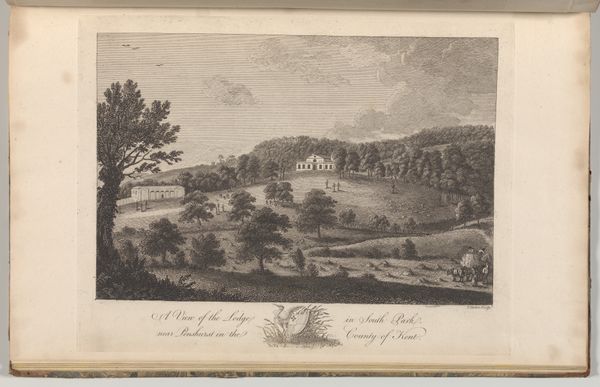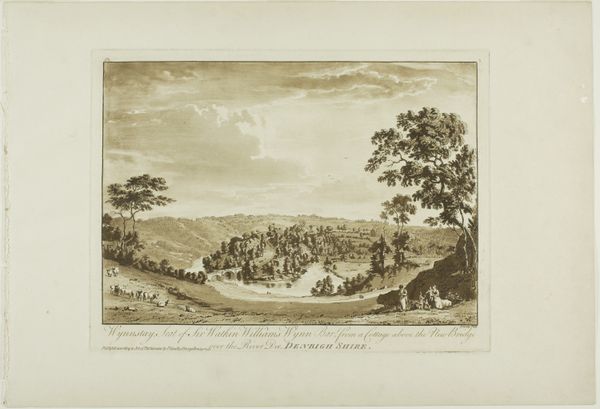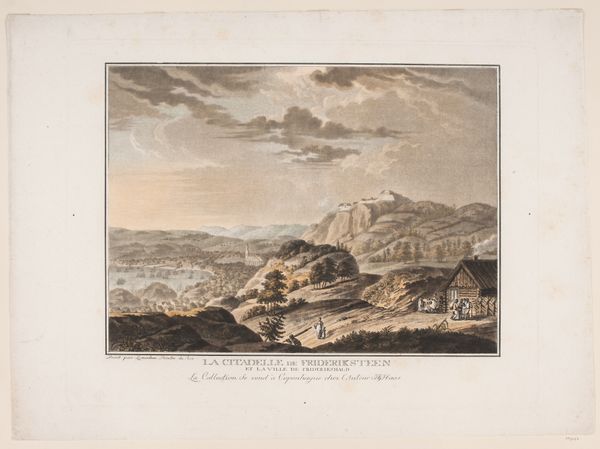
aquatint, print, etching, engraving
#
aquatint
#
neoclacissism
# print
#
etching
#
landscape
#
history-painting
#
engraving
#
watercolor
Dimensions: 373 mm (height) x 482 mm (width) (plademaal)
Editor: This is "Monument à Strikklestad," made between 1788 and 1792 by Georg Haas. It combines engraving, etching, and aquatint – it’s quite detailed! I am struck by how it elevates what seems like a simple country landscape into something...monumental. What do you see in this piece, beyond the pretty picture? Curator: Beyond the pleasing scene, I see a constructed narrative rooted in specific materials and techniques of production. Consider the aquatint, etching and engraving. These processes required skilled labor, a network for distribution, and a consuming public. This piece, a 'monument,' then becomes a commodity. Who was its target audience and what narratives about labor or class could it reinforce or challenge? Editor: So, you're saying it's not just a celebration of a place, but a product of its time, reflecting the means of production and social structure? Curator: Precisely! The medium is rarely neutral. Notice, the composition utilizes linear perspective, yet how is this monument actually functioning within the social and material circumstances that framed its creation? What sort of landscape are we really seeing, one of labor, leisure, or the market? What is romanticized? Editor: I hadn’t considered the economic side. It seems obvious now, how the choice of materials affects the image's reach. This printmaking suggests something made for mass consumption? Curator: Indeed, prints like this democratized access to imagery, yet questions arise. Who could afford such images, and whose stories were deemed worthy of monumentalization through this industrialized process? The landscape itself becomes a stage for this interplay between power, production, and consumption. Editor: This gives me a completely new perspective! I always focused on the imagery but it sounds like looking at *how* it was made is just as revealing. Curator: Exactly! By understanding the materials, the process, and the societal context, we can reveal a richer understanding of art history and artistic intentions.
Comments
No comments
Be the first to comment and join the conversation on the ultimate creative platform.
